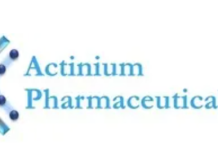Transdermal Specialities Global (TSG) CEO Bruce Redding is credited as the inventor of the microcapsule technology that has been vital in administering insulin through a transdermal patch. The company is currently in the third phase of having FDA approval of its transdermal insulin patch.
Transdermal Specialities revolutionizing insulin administration
Once the transdermal insulin patch receives approval, it could benefit up to 30 million patients in the US with Type II diabetes. There is currently no way of administering insulin to patients except through injection since it is a large molecule. As a result, patients cannot take insulin in a digestible pill form, just like birth control or a nicotine patch. Interestingly the company’s U-STRIP will be the first form of this type for insulin delivery.
In mid-March, the company relocated to Frederick just before they shut down because of the coronavirus pandemic. There was laboratory space at Frederick that was not in use, which Redding’s friend offered to TSG, thus boosting their space than what they had in Philadelphia.
TSG patch delivered in two waveforms
The TSG patch employs ultrasound waves in opening skin pores to push the drug. Interestingly these ultrasound waves are not like the regular waves because they don’t burn the skin or destroy the drug. Redding said that the ultrasound wave is unique because it is in two forms. The first form is the sawtooth wave that opens pores on the skin, and the other is the square wave responsible for pushing the drug into the skin. He added that it is an ultrasonic waveform combination that most people can’t hear or feel. However, dogs can hear the device if they are near enough.
The patch will have a small pager-sized device that patients can wear on a belt, and they can set their weight and glucose meters. They can then set when they plan to eat, and the patch will release four insulin units before and after eating to counter the carbohydrates in the meal. This will be different from the current process, where one should inject themselves with insulin 20 minutes before a meal.
















